How ERP improves customer retention
Other articles on this website look at using ERP to reduce costs, and it should be possible to pass some of those savings on to customers as price reductions. But customers are looking for more than just low prices because nowadays they are also demanding:
- reliable delivery promises,
- predictable delivery promises,
- shorter delivery lead times,
- a reduced cost of trading, and
- an improved ability to respond to changing demands
Reliable delivery promises are essential to retaining customers in the long term. Initially, they may be attracted by low prices but every time they are let down by late delivery, two things can happen. Firstly, their short-range plans can be disrupted. If they are a distributor, they will have gaps on their shelves and lost sales and, if they are an end-user of the item, at the very best the buyer responsible is going to have to explain to their internal customer why their order hasn't been delivered on time.
That is embarrassing and, like most people, buyers don't like to be embarrassed so they will be less likely to risk their reputation in the future by buying from suppliers who have let them down. When an external customer is part of a supply chain, letting them down means that they will likely have to let down their customer who, of course, will then be letting down their customer in turn; to the end of the chain.
So a broken promise goes a long way and is something to be avoided. (Bad reputations also travel a long way and equally are something to be avoided.) Key to keeping delivery promises is ensuring that they are achievable in the first place and, for this, ERP offers Finite Capacity Scheduling (FCS).
New or prospective orders can be added to the schedule and a realistic delivery date can be calculated, in most cases in just a few minutes, When materials availability has to be considered also, many FCS system providers offer Advanced Planning and Scheduling (APS) options to cope with that and this option ensures that jobs cannot be scheduled unless the necessary materials are available.
When jobs go into production, ERP's work-in-progress tracking systems ensure that production schedules are adhered to and that nothing gets lost (figuratively or physically) in the factory by identifying jobs that are in danger of running late. Returning to materials availability; a production schedule is only as good as the supply chain that feeds it, and ERP can help by identifying suppliers who are failing, either by repeatedly delivering late or by delivering items that do not meet quality standards.
That offers possibilities of working with these suppliers to improve their performance or of identifying better and more reliable suppliers and moving business to them. In many industries, though, keeping delivery promises is not sufficient. Customers need predictable delivery promises because if, for example, items that have been on a 4-week delivery move to a 6 or 8-week delivery, that can cause real problems for their planning systems.
ERP can help avoid this in several ways; one of which is by allowing capacity and materials to be reserved for key customers but, even better, by allowing demand forecasting to feed into capacity planning systems so that potential capacity overloads in peak periods can be identified in time to take remedial action.
That might include moving some jobs to periods where demand is lower (perhaps using spare capacity to build up stocks for peak periods) or even offering sales discounts during such periods to encourage customers to bring forward important orders or to push backorders for stock-build.
A final point on delivery performance is that many customers are looking for short delivery lead times, even on make-to-order items, and will often be prepared to pay premium prices to get them. One way that ERP can help is by allowing stocks to be held at a raw material or, even better, an intermediate level.
Calculating the quantities to hold requires demand forecasts and, although many companies doubt their ability to forecast accurately, there is practical advice available in blogs on this website on improving accuracy. It also helps that forecasting at a raw material or common sub-assembly level is usually much easier and much more accurate than attempting it at a finished item level, so holding these stocks may well not be as expensive as it might initially appear.
Beyond making good delivery promises and sticking to them, companies can use ERP to deliver a better service to their customers. There are several options available to them to make themselves more appealing. Customers want their suppliers to be easy to deal with and they want the admin costs of their dealings to be minimized.
One thing to consider is that your part number for a particular item is usually not that which your customer uses so, to place an order, they either have to look up your part number in a catalog or rely on a sufficient description of the item. The first option is inefficient and the second is problematic.
The good news is that, not only do good ERP systems allow customers to order using their part numbers, which are then translated automatically into their supplier's part number, but they allow their numbers to be quoted back to them on delivery notes and invoices.
Both of those things will make their lives easier (ask your purchasing, receiving, and accounting people) and will be appreciated. A second way of reducing your customers' workload is to reduce the effort involved in transacting your invoices to them. When customers only have a few deliveries monthly, receiving a separate invoice for every delivery is not a problem.
But, when they place a lot of orders every week, processing invoices every month separately can be a real pain. Good ERP systems, though, allow consolidated invoicing; which is to say that your ERP system can raise just one multi-line invoice for multiple deliveries across multiple purchase orders over some time (typically a month).
For your customers, the option of processing just one invoice a month, rather than dozens or hundreds, can be a major saving. The last thing to consider is that customers can have changing demands. Sometimes these are caused by other suppliers letting them down, threatening their plans, and suppliers who can respond to their needs quickly are likely to be favored in the future.
Tools that ERP provides to facilitate this have already been mentioned but they can usefully be restated here. Responding quickly demands that both spare materials and spare capacity are available. Holding stock at intermediate levels allows companies to react more quickly to unforecast customer demand and, by doing so, can allow them to win business when their competitors have let those customers down or when those customers have opportunities to win new and unforecast business.
Turning to the capacity aspect, ERP can help in two ways. Some companies reserve capacity to cope with urgent orders; especially from key customers. ERP usually achieves this by allowing sales forecasts to be entered, either at a product or product group level and allowing these forecasts to be automatically ignored if they don't firm up by a given date.
If the forecast doesn't firm up, existing orders can be pulled forward to take up the slack and few customers complain about their orders being delivered earlier than promised. The second option that ERP offers is Finite Capacity Scheduling (FCS), which allows new or prospective orders to be loaded to see how soon they can be made.
If the achievable date is not soon enough, FCS can also calculate how much overtime work would be required to hit an acceptable delivery date, and then it becomes a business decision whether to absorb those costs or to charge them back to the customer.
ERP can clearly help companies offer their customers a better and more responsive service and doing so not only will help to retain their business but also opens up possibilities to build upon current trading levels by taking business from competitors who cannot respond as quickly or as effectively to their needs.
ERP is not just a transaction management system but a way of gaining a business advantage.
Free white paper
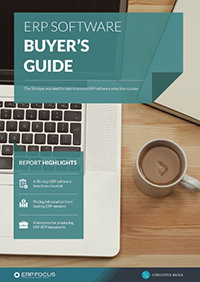
ERP software buyer's guide
Save hours of ERP selection research with this comprehensive buyer's guide
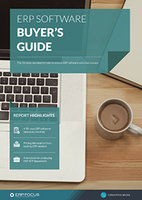
Featured white papers
-
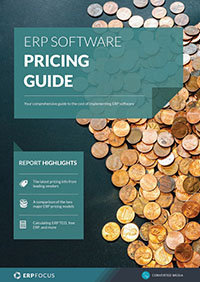
ERP Software Pricing Guide
Get the latest pricing information on over 80 popular ERP systems, and learn how to budget for your ERP project in our free guide
Download -
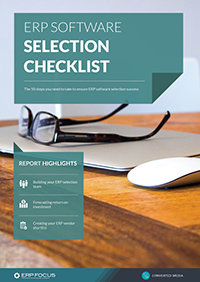
60-Step ERP Selection Checklist
Get the comprehensive checklist for your ERP selection project
Download -
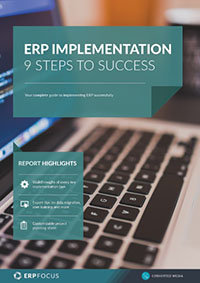
ERP Implementation: 9 steps to success
The 9 proven steps you should follow when implementing ERP
Download
Related articles
-

Using bills of material to solve business problems
BOM functionality is an often overlooked ERP module - but how can it help your business?
-

CMMC Compliance: What Aerospace and Defense Manufacturers Need to Know
Key insights on CMMC compliance, deadlines, and securing DoD contracts with CMMC 2.0 certificatio...
-

Using ERP for a competitive advantage
How ERP software can help you get ahead of the competition

